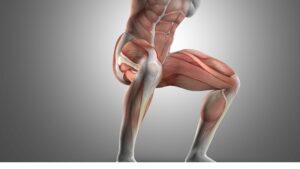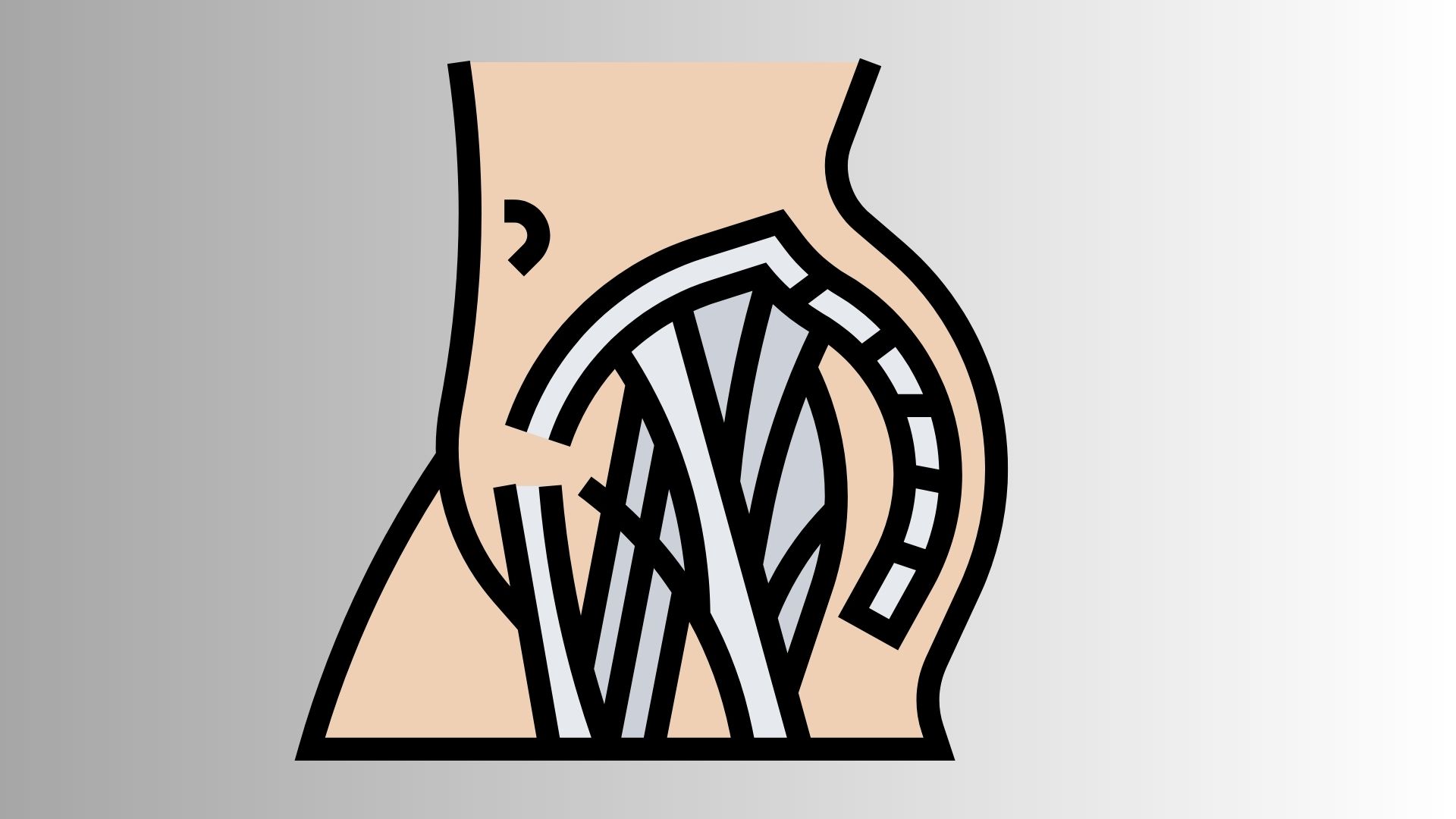While most people associate squats with the gluteus maximus, the gluteus medius is equally important for stability, balance, and overall lower body strength.
In this article, we will delve into the world of squats and explore various techniques and variations that specifically target the gluteus medius.
By incorporating these exercises into your routine, you’ll feel a satisfying burn and achieve remarkable results.
Squats primarily target the quadriceps, hamstrings, and gluteus maximus. However, depending on form and technique, the gluteus medius may also be engaged, leading to a burn in that area. The gluteus medius stabilizes the pelvis and aids in hip abduction. Maintaining proper form, such as a shoulder-width stance and tracking knees over toes, optimizes gluteus medius activation. If experiencing excessive pain or discomfort, consult a fitness professional or healthcare provider for guidance.
Squats primarily target quadriceps.
Squats are a highly effective compound exercise that targets several muscles in the lower body, including the quadriceps, hamstrings, and gluteus maximus.
However, the degree to which the gluteus medius is engaged during squats can vary depending on your form, technique, and specific variations of the exercise.
The gluteus medius is one of the three major muscles in the gluteal region, located on the side of the hip. Its primary function is to abduct the hip, which means it helps to move the leg away from the midline of the body.
In addition to hip abduction, the gluteus medius also plays a crucial role in stabilizing the pelvis during various movements like walking, running, and standing on one leg.
During a standard squat, the gluteus medius is involved to some extent, although it may not be the primary muscle targeted.
The main focus is usually on the quadriceps, hamstrings, and gluteus maximus. However, certain squat variations can place greater emphasis on the gluteus medius by incorporating hip abduction.
Examples
One example is the sumo squat, where you position your feet wider than shoulder-width apart and point your toes out at an angle.
This stance requires more hip abduction and engages the gluteus medius to a greater degree. As you descend into the squat, you’ll feel the burn in the gluteus medius as it activates to stabilize the hips and maintain proper alignment.
Another example is the lateral lunge, which involves stepping to the side and squatting down on one leg while keeping the other leg straight. This exercise also targets the gluteus medius more intensely due to the lateral movement and hip abduction required to perform the exercise.
In both of these examples, the gluteus medius is recruited to provide stability and control during the squatting motion.
It works to keep the pelvis level and prevent the knees from collapsing inward, which is essential for maintaining proper form and preventing injury.

Activation of gluteus medius.
To maximize the activation of the gluteus medius during squats, it’s crucial to focus on maintaining proper form and technique. Here are some key points to keep in mind:
Stance:
Start with your feet shoulder-width apart or slightly wider, depending on the variation you’re performing. For a sumo squat, a wider stance with toes pointed out is recommended.
Alignment:
Keep your knees in line with your toes throughout the movement. Avoid allowing them to collapse inward, as this reduces gluteus medius engagement.
Depth:
Aim to squat to a comfortable depth that allows you to maintain good form. Going too low without proper control can compromise stability and limit gluteus medius activation.
Core engagement:
Engage your core muscles by bracing your abdominals during the squat. A strong core supports proper alignment and allows the gluteus medius to work more effectively.
By following these guidelines and performing squats with proper form, you can enhance gluteus medius activation and distribute the workload evenly across the muscles involved in the exercise.
While feeling a burn in the gluteus medius during squats is generally a positive sign, it’s important to note the difference between muscular fatigue and pain.
Muscle burn and fatigue are expected during exercise, indicating that the muscle is being challenged and working.
However, if you experience sharp pain, discomfort, or any unusual sensations beyond the typical muscle burn, it’s essential to consult with a qualified fitness professional or healthcare provider. They can assess your form, identify any underlying issues, and provide appropriate guidance to prevent injury.
Remember, everyone’s body is unique, and individual responses to exercises may vary. It’s always beneficial to work with a professional to ensure you’re performing exercises correctly.
Here’s a table that provides information on how, why, when, where, and what to consider:
| Category | How | Why | When | Where | What to Consider |
|---|---|---|---|---|---|
| How | By what method or process something is done | To understand the steps or actions required | When attempting to complete a task or achieve a goal | In a particular location or situation | The specific actions, techniques, or procedures involved |
| Why | For what reason or purpose something is done | To determine the motivation or objective | Before engaging in an activity or making a decision | In a specific context or situation | The underlying rationale, benefits, or potential outcomes |
| When | At what time or under what circumstances something occurs | To establish the appropriate timing or conditions | Before or after specific events or triggers | In a particular time frame or situation | The temporal or situational factors that influence the occurrence |
| Where | In what location or place something exists or happens | To identify the specific site or setting | When considering spatial aspects or requirements | In a specific geographic or physical context | The spatial, environmental, or logistical aspects to account for |
| What to Consider | Factors, aspects, or elements to take into account | To ensure comprehensive analysis or decision-making | During the planning, evaluation, or decision-making process | In relation to a particular subject or topic | The relevant considerations, variables, or factors involved |
Please note that this table provides a general framework, and the specific details within each category may vary depending on the context or subject matter you are considering.
Conclusion.
In conclusion, squats primarily target the quadriceps, hamstrings, and gluteus maximus, but the engagement of the gluteus medius can vary depending on form and technique.
The gluteus medius, located on the side of the hip, functions to abduct the hip and stabilize the pelvis during movement.
While performing squats, certain variations such as sumo squats or lateral lunges can place greater emphasis on the gluteus medius by incorporating hip abduction.
These movements require the gluteus medius to work harder to stabilize the hips and maintain proper alignment.
Feeling a burn in the gluteus medius during squats indicates that the muscle is being activated and contributing to lower body strength and stability.
To maximize gluteus medius activation, it is important to focus on maintaining proper form, including a shoulder-width or wider stance, proper knee alignment, and core engagement.
It is crucial to differentiate between normal muscle burn and pain during exercise. While muscle burn and fatigue are expected, sharp pain or discomfort beyond the usual burn should not be ignored.
Consulting with a fitness professional or healthcare provider can help ensure proper form, identify any underlying issues, and prevent injuries.
In summary, squats can engage the gluteus medius to varying degrees depending on the specific technique used.
By maintaining proper form and technique, you can effectively target the gluteus medius and other lower body muscles, contributing to overall strength, stability, and functional movement.

Hey there, it’s Mike Rrsq, the Editor-in-Chief over at Jsquat.com, and I’m absolutely obsessed with all things squat fitness! I’ve been lucky enough to get some serious recognition for my work in this field. With a solid background in the fitness and wellness industry, I’ve been there right from the get-go, helping shape this website into what it is today.
You see, I’m not just the boss around here; I’m also a passionate contributor. I love sharing my insights through my articles, and trust me, they’re not your run-of-the-mill stuff. Each piece I write is a labor of love, filled with my expertise and real-world experience in the fitness universe. So, if you’re into fitness and looking for some inspiration, you’re in the right place!

